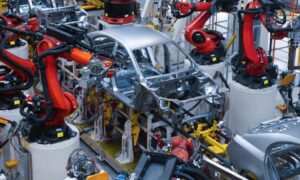Envision a workplace where every team member feels valued, motivated, and empowered to unleash their full potential. Picture a realm where technology seamlessly merges with human interactions, unlocking productivity and innovation that transcends expectations. This is not a distant reverie; it’s the marriage of employee experience and cutting-edge technology. In this article, we explore how the integration of digital tools can revolutionize organizational culture, amplify collaboration, and fully tap into the latent potential of your workforce.
Introduction to Employee Experience and Technology
Technology has ushered in a transformative era for employee experience, elevating its efficiency and efficacy. By automating HR processes and streamlining communication, technology fosters an improved employee journey. Furthermore, by tracking engagement and performance data, employers can pinpoint concerns early and implement corrective measures to enhance the employee experience.
Benefits of Leveraging Technology to Elevate Employee Experience
Technology stands as a pivotal factor in augmenting the employee experience. Through automation of HR processes and the provision of self-service tools, employee lives are simplified, and manager-employee communication is enhanced. Moreover, technology facilitates data collection on employee satisfaction and engagement, a valuable resource for workplace enhancements.
Leveraging Technology for Enhanced Employee Engagement
In an increasingly global and competitive business landscape, effective employee engagement is paramount. Thankfully, technology offers solutions. Here are four strategies for leveraging technology to enhance employee engagement:
Amplify Communication: Technology facilitates uninterrupted connections between managers and employees, irrespective of location. Employ email, instant messaging, and video conferencing to sustain seamless communication.
Personalization: Technology enables tailoring of content and messages for individual employees. This personalized approach addresses specific needs and interests, leading to more impactful engagement.
Foster Collaboration: Technology acts as a catalyst for collaboration among employees, regardless of geographical boundaries. Employ project management tools and social media platforms to encourage teamwork toward shared goals.
Promote Transparency: Technology contributes to a more transparent work environment, where information is accessible to all. This fosters better understanding and communication across the organization, nurturing a culture of engagement.
Illustrative Examples of Technology-Enhanced Employee Experiences
To illustrate the real-world application of technology in enhancing employee experiences, consider the following examples:
Enterprise Social Networks (ESNs): Many companies utilize ESNs to facilitate internal communication and collaboration. Platforms like Slack, Microsoft Teams, or Yammer serve as internal messaging systems, nurturing connectivity and community within the organization.
HR Management Software: Organizations invest in HR management software to streamline onboarding, performance tracking, and employee access to personal records. This enhances access to critical information and empowers managers to monitor employee development.
Mobile Apps: Mobile apps grant employees on-the-go access to company resources and information. From expense tracking to requesting time off, mobile apps untether employees from desktops, improving accessibility.
Implementing Technology for Enhanced Employee Experience: Challenges Implementing technology to enhance employee experience is accompanied by diverse challenges, including:
Tailoring Technology: Ensuring selected technology aligns with employee needs.
User-Friendly Interfaces: Prioritizing intuitive design for user adoption.
Training: Equipping employees with necessary skills to navigate technology.
Compatibility: Ensuring technology harmonizes with existing systems.
Expectation Management: Realistic assessment of technology’s capabilities.
Stakeholder Buy-In: Garnering support from senior management, IT, HR, and line managers.
Optimizing Technology for Enhanced Employee Experience: Best Practices
Foster Communication and Collaboration: Encourage technology usage for seamless communication and collaboration among employees.
Automate Repetitive Tasks: Automating routine tasks frees employees for more engaging work. Select software that aligns with company needs.
Gather Employee Feedback: Regularly seek employee input on technology experiences to drive improvements.
Conclusion
Technology is a potent instrument for crafting a superlative employee experience. From bolstering communication and collaboration to boosting productivity, technology is a vital asset for organizations seeking a competitive edge. By harnessing the right technologies, organizations can establish an ecosystem where employees feel empowered and deeply engaged in their work. Ultimately, by unlocking the fusion of employee experience and technology, businesses pave the way for a more prosperous and productive workforce.



































